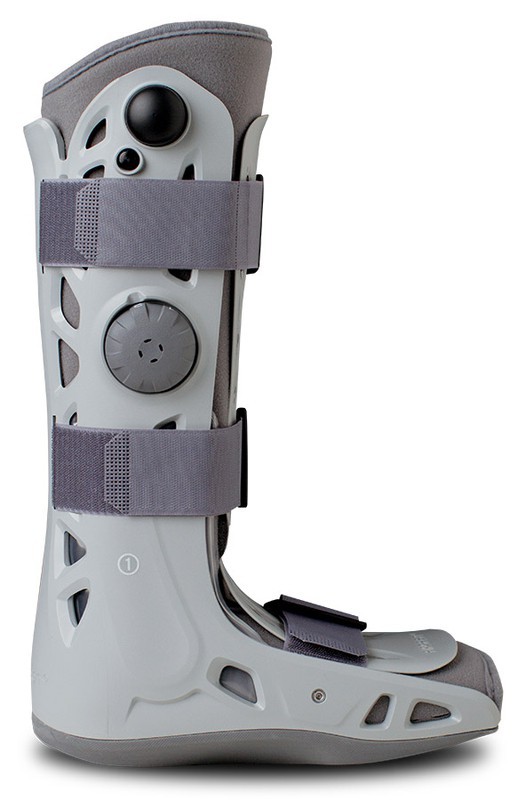Walker type boot orthosis
The walker boot is one of the most requested orthopedic splints for the recovery of
Foot injuries. Its function is to contain a lower extremity in cases of sprains,
fractures or other injuries that require additional support and immobilization of the area.

Offers a firm immobilization, allowing walking thanks to its light weight and sole
Non-slip in the shape of a rocker. The sole absorbs the impacts in the heel and improves the
gait pattern.
The orthopedic Walker is a boot that can cover up to the ankle or knee and allows the
patient to walk, despite having the foot or leg completely immobilized. These boots the
They are also recommended after surgery, so that the lower limb is protected.
At the recovery level, walkers stand out for speeding up the recovery period
of injuries and, in this way, avoid further loss of muscle tone that is very common
after long periods of immobilization.
All this is possible since the walkers orthopedic boots allow a partial withdrawal for
to rehabilitate the muscles more adequately and for the possibility of using a walker
Articulated and apply degrees of movement.
On the other hand, if the injury allows it, with the walker boot it is possible to carry out a direct load or
partial, from the moment of its adaptation, thanks to its rocker sole with floor
Non-slip.
As its technical definition indicates, the walker is a highly functional prosthesis, both for the
patient and for the professionals who supervise the treatment, it only contributes
Advantages over casts.
Unlike immobilization plasters, if the pathology allows it, removal is possible
partial walker for hygiene, to sleep or to access wound care and allow its
drainage.
Therefore, functionality, comfort and easy hygiene for the user are very
Powerful advantages of a walker compared to immobilization casts.
This type of orthosis can be classified in different ways:
By its length: long or short
Due to its articulation: articulated with flexion-extension control or fixed
Due to its structure: Bivalves or with two lateral stakes.
Due to its characteristics: whether or not they incorporate tires
What are the differences between a short walker and a long walker?
Usually the most indicated is that the short walker boot is used for injuries that affect
to the foot and the long walker boot is more indicated for injuries to the ankle, tibia and/or fibula.
As complements for these orthopedic boots there are height wedges with gradual withdrawal
for injuries to the Achilles tendon or posterior musculature and also sheaths to be able to
walk with it when it rains without getting your feet wet or for indoors.





Our customers trust us
Receive our news